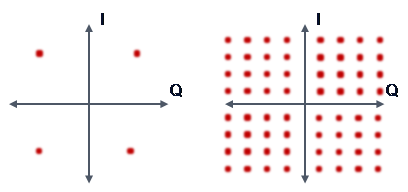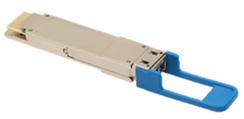As optical networking vendors announce fifth-generation coherent DSP chips, supporting higher capacity wavelengths, some confusion has developed over the actual performance of 800G wavelengths in real-world WDM networks, as opposed to highly controlled and optimized field trials or lab experiments. Over standard single-mode fiber, carriers should expect 100 – 220 km optical reach in most WDM applications. While that’s significantly less than some of the industry grabbing 800G headlines, the differences are easily explained through a short review of the factors affecting optical reach performance.
The new fifth-generation coherent DSPs represent significant technical achievements and push wavelength capacities close to the Shannon theoretical limits. However, the real benefit may be less about 800G wavelengths and more about enabling 400G to 600G wavelengths over regional to subsea distances.
In coherent optics, modulation is used to encode digital ones and zeros into symbols that are transmitted at the baud rate, or symbol rate. Higher order modulations, such as 32QAM or 64QAM, encode more bits per symbol, but with a tradeoff of shorter optical reach compared to lower complexity modulations, such as QPSK or 8QAM.
Higher order modulations use more constellation points, which are spaced more closely together, resulting in higher optical signal-to-noise ratio (OSNR) requirements at the receiver (Figure 1). The higher OSNR requirements, for the 32QAM and 64QAM modulations, result in shorter optical reaches for these wavelengths.

Due to the capacity versus optical reach tradeoff in coherent optics, high-capacity 600G – 800G wavelengths have been limited to shorter-reach applications due to their reliance on higher order modulation. Long haul (LH), ultra-long haul (ULH), and subsea applications have been limited to lower capacity 200G – 400G wavelengths that can use lower order modulation formats.
However, one of the key benefits of fifth-generation DSPs is support of 90 Gbaud and higher transmission. The higher baud rates enable 400G – 600G wavelengths to use lower order modulation formats (8QAM or probabilistic constellation shaped 16QAM) suitable for LH/ULH/subsea applications. Unfortunately, 800G wavelengths still require the use of 32QAM and 64QAM modulations, limiting their optical reach.
Modulation format isn’t the only factor that limits higher-capacity wavelengths in a typical real-world network. Optical fiber type, fiber attenuation specification, and span distances (loss) also play primary roles in defining optical reach.
Since all vendors operate using the same physics of light and essentially the same underlying core technologies, most modern coherent optics, based on the industry’s latest technologies, operate along similar capacity vs. performance curves. That’s why, despite our efforts to differentiate our products and performance, network operators currently can expect to see a typical 800G wavelength transmission reach of 100 – 220 km over real-world networks regardless of the vendor they choose.
But that doesn’t mean vendors don’t like to push the performance envelope if given an opportunity. How might we field trial greater reaches on the right network with a willing operator as partner? There are two common strategies.
First, on real-world WDM networks, transponders typically incorporate 2 to +3 dB of spare margin to accommodate such factors as component aging (10 – 15 years), temperature variation, component variance, polarization dependent loss (PDL), polarization mode dispersion (PMD), and nonlinearity impairments. The spare margins are a necessity to ensure proper operation over the life of the WDM network.
Inclusion of such spare margins in a WDM design typically reduces actual operating reach in real-world networks by 40 – 50% versus an “ideal” scenario. So, a vendor looking to maximize reach in a trial might operate without these spare margins. The vendor also might add guard bands on either side of the test wavelength to reduce or eliminate nonlinearity penalties from adjacent channels, further improving performance.
Meanwhile, as mentioned above, fiber type, attenuation, and span loss combine to play an enormous role in defining maximum optical reach. That’s why modern subsea networks use special ultra-low-loss (ULL) fiber (<01.7 dB/km) in combination with in-line amplifiers (repeaters) with good noise figures and consistent, relatively short span distances to stretch transmission to transoceanic lengths. So a second strategy a vendor might use to demonstrate longer reach would be to find a network that uses low loss (LL) or ULL fiber types that vastly outperform standard single-mode fiber (e.g., SMF-28), which typically has losses of 0.22 – 0.25 dB/km. Some of these premium LL/ULL fibers are technically part of the manufacturer’s standard single-mode portfolio, but are hardly standard when it comes to performance – and aren’t typically used in most terrestrial networks.
Transmitting one or more 800G wavelengths using either of these strategies will result in longer reach than what the industry generally agrees will be typical in a real-world network scenario. Use both and a vendor might achieve significantly longer reach. Thus, as network operators evaluate the series of 800G performance announcements that we’re sure to see in the coming months from a variety of vendors, some caution needs to be used. In particular, operators should compare the scenario that produced each result with the composition and operation of their actual network infrastructure.
Meanwhile, the introduction of 400ZR optics is having an impact on high-capacity network planning for metro edge and data center interconnect (DCI) applications. The new 400ZR standard defines an interoperable, pluggable, 400G coherent module for distances up to 120 km that incorporates the DSP inside the module. Integration of the coherent DSP into optical modules has long been an industry objective, but only recently has become viable with the availability of low-power 7-nm CMOS technology. The small size, low cost, lower power, and pluggable form factor make the 400ZR an obvious choice for short-reach, high-capacity transport applications.

The introduction of 400ZR optics may reduce the immediate demand for 800G optics, since both interfaces are targeting (or, in the case of 800G, will likely be limited to) the same short-reach applications. This new 400ZR optical modules are projected to have wide adaptation for high-capacity short-reach applications due to their 1) lower costs, 2) lower power, 3) smaller size, 4) pluggable form, and 5) interoperability, and will directly compete with 800G interfaces on these same deployments.
Contact: Nina
E-mail: Nina@opfibre.com
Whatsapp:+86 13510657722
Add: Rooms 06, 13A/F., South Tower, World Finance Centre, Harbour Cityz 17 Canton Road, Tsim Sha Tsui, Kowloon, Hong Kong
We chat
